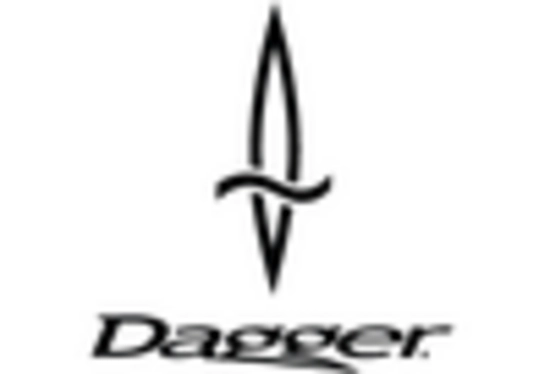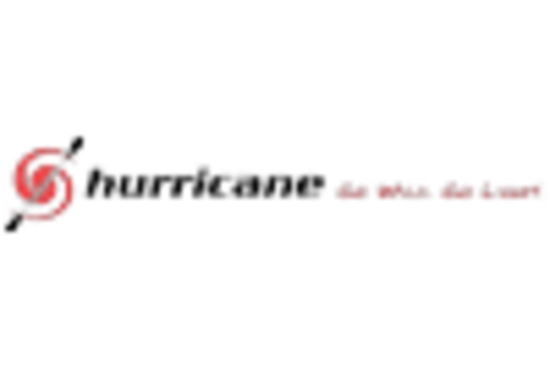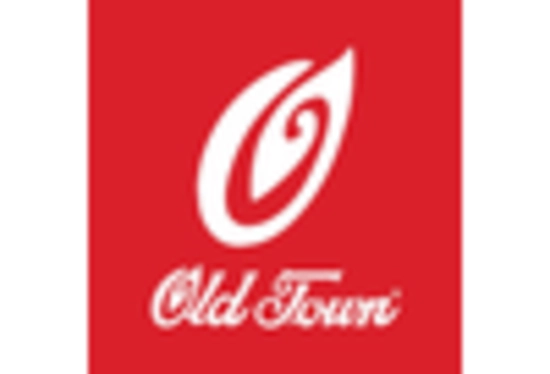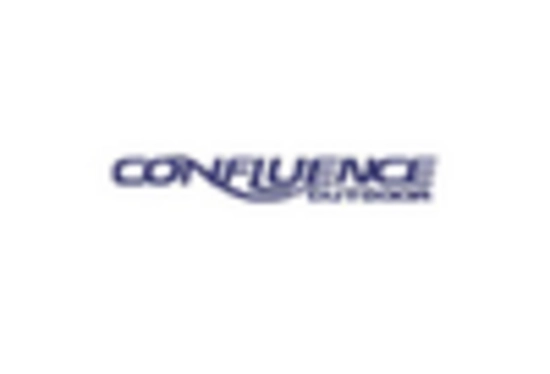Growth of Adventure Tourism
The Canoe and Kayak Market is poised for growth due to the rising popularity of adventure tourism. As travelers seek unique and immersive experiences, paddlesports have emerged as a favored activity among adventure seekers. This trend is supported by data indicating that adventure tourism has expanded by over 30% in recent years, with canoeing and kayaking being prominent activities. Tour operators are increasingly offering guided paddling trips, which not only enhance the appeal of these sports but also contribute to local economies. The growth of adventure tourism is likely to drive demand for canoes and kayaks, as more individuals look to explore waterways and engage with nature. Consequently, the Canoe and Kayak Market stands to benefit from this expanding segment of the tourism sector.
Technological Innovations in Equipment
Technological advancements play a crucial role in shaping the Canoe and Kayak Market. Innovations in materials, design, and manufacturing processes have led to the development of lighter, more durable, and user-friendly equipment. For instance, the introduction of advanced composite materials has improved the performance and longevity of kayaks and canoes. Additionally, the integration of smart technology, such as GPS tracking and performance monitoring, appeals to tech-savvy consumers seeking enhanced experiences. Market data suggests that the demand for high-tech paddlesport equipment is on the rise, with a projected growth rate of 15% over the next five years. This trend indicates that as technology continues to evolve, the Canoe and Kayak Market will likely see increased competition and innovation, ultimately benefiting consumers.
Rising Interest in Fitness and Wellness
The Canoe and Kayak Market is experiencing a boost from the increasing interest in fitness and wellness among consumers. As more individuals prioritize physical health, activities like kayaking and canoeing are recognized for their cardiovascular benefits and full-body workouts. Recent surveys indicate that nearly 40% of paddlers engage in these sports primarily for fitness reasons, highlighting a shift in consumer motivations. This trend is further supported by the growing number of fitness-focused events, such as paddling races and wellness retreats, which promote the sport as a means of achieving health goals. As the fitness movement continues to gain momentum, the Canoe and Kayak Market is likely to see sustained growth, driven by a demographic eager to combine recreation with health benefits.
Environmental Awareness and Sustainability
The Canoe and Kayak Market is significantly influenced by the rising emphasis on environmental sustainability. Consumers are increasingly drawn to eco-friendly products, prompting manufacturers to innovate with sustainable materials and production processes. The market has seen a shift towards biodegradable and recyclable materials, aligning with the values of environmentally conscious consumers. This trend is reflected in the growing number of brands that prioritize sustainability in their offerings, which has the potential to attract a broader customer base. Furthermore, initiatives promoting the conservation of waterways and natural habitats resonate with paddlers, enhancing their connection to the environment. As a result, the Canoe and Kayak Market is likely to benefit from this heightened environmental awareness, fostering a culture of responsible recreation.
Increased Outdoor Recreation Participation
The Canoe and Kayak Market experiences a notable surge in demand as more individuals engage in outdoor recreational activities. This trend is driven by a growing awareness of the physical and mental health benefits associated with outdoor sports. Recent data indicates that participation in paddlesports has increased by approximately 20% over the past five years, reflecting a shift towards healthier lifestyles. As urban populations seek escape from city life, the appeal of canoeing and kayaking as accessible and enjoyable activities continues to rise. This increase in outdoor recreation participation not only boosts sales of canoes and kayaks but also encourages the development of related infrastructure, such as rental services and guided tours, further enhancing the Canoe and Kayak Market.

















Leave a Comment